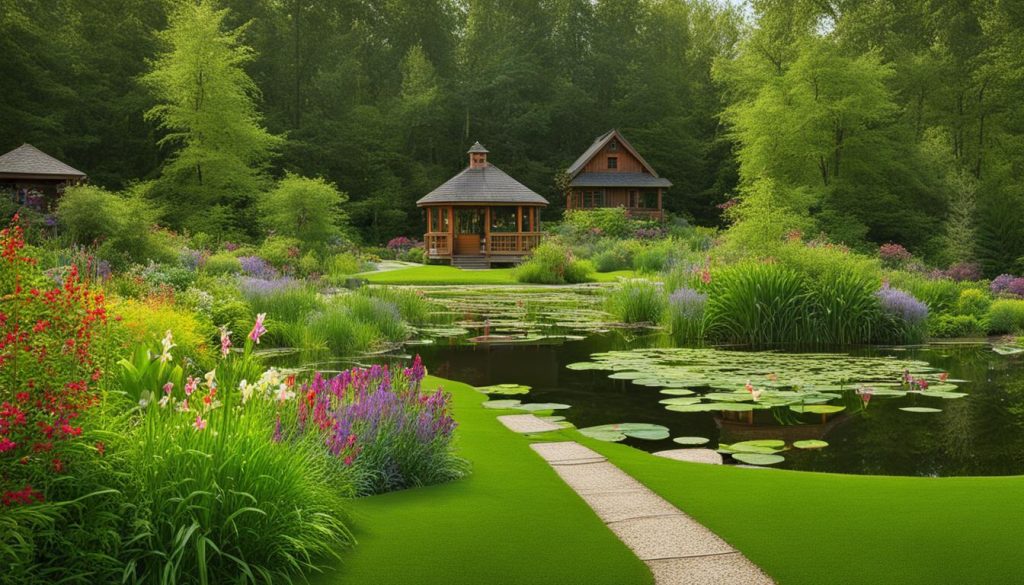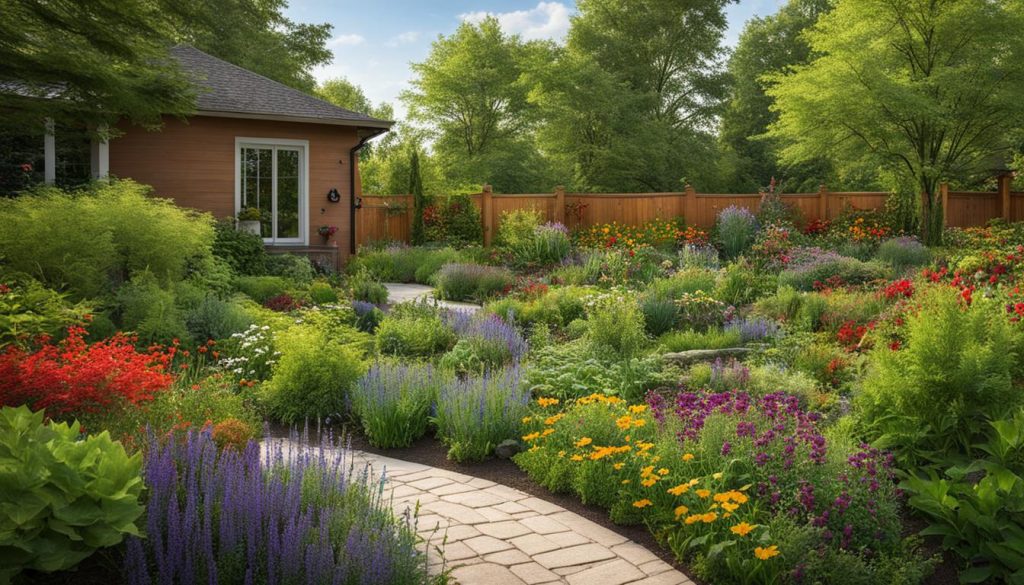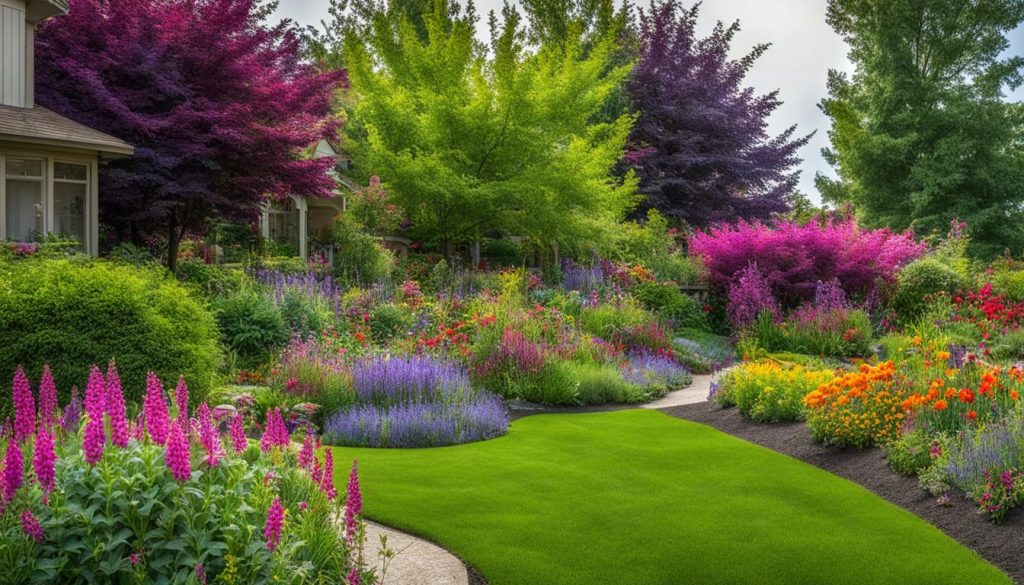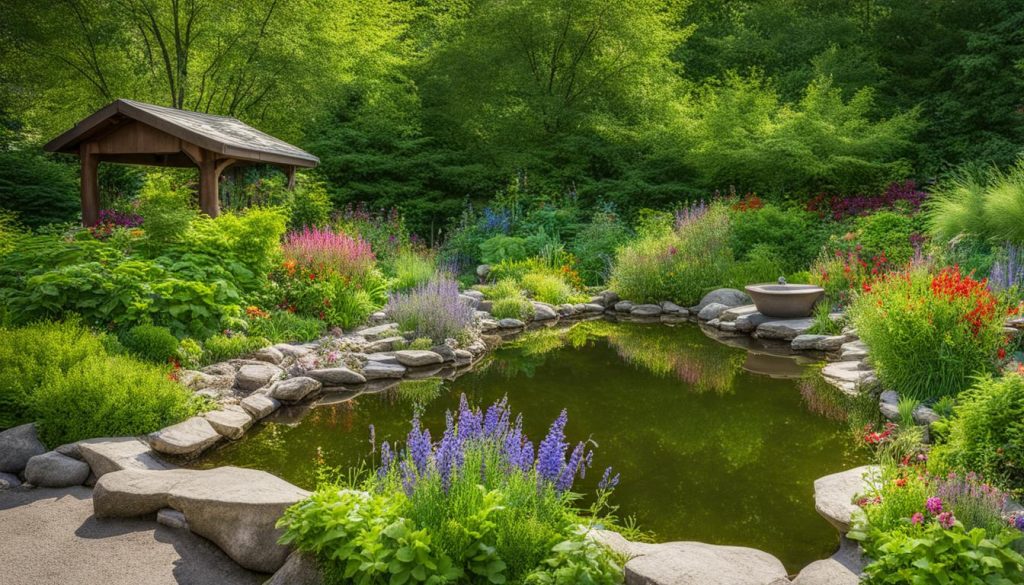Hello and welcome to our guide on wildlife-friendly landscaping in Vaughan! Are you interested in creating a thriving habitat in your yard for local species? Look no further! We’re here to share our expertise on how you can transform your outdoor space into a wildlife haven.
Our wildlife-friendly landscaping techniques go beyond just beautifying your yard. They promote biodiversity, habitat conservation, and contribute to the overall health of the ecosystem. By choosing to implement our tips, you can make a positive impact on the Vaughan community and support local wildlife.
Join us on this journey as we explore the importance of wildlife-friendly landscaping, the design process, practical implementation, and maintenance of your transformed yard. Don’t miss out on the opportunity to create a beautiful and sustainable space for both you and your furry, feathered, and scaled neighbors.
Understanding the Importance of Wildlife-Friendly Landscaping
At Landscaping Vaughan, we believe that every little step towards habitat conservation counts. By adopting a wildlife-friendly landscaping approach, we can play a significant role in preserving biodiversity in Vaughan. The wildlife-friendly landscaping concept involves designing and maintaining our yards in a way that attracts local wildlife and provides them with a safe environment.
The increasing urbanization and loss of natural habitat have led to a decline in local species. We can help mitigate this by implementing wildlife-friendly landscaping practices. This approach involves creating food and nesting sources for local wildlife to thrive in our yards. It is a way we can give back to the environment and also benefit from the beauty and diversity of local wildlife.
In addition to providing a suitable habitat for local wildlife, wildlife-friendly landscaping also reduces our environmental impact. We can reduce water usage, eliminate harmful pesticides, and promote a healthy and balanced ecosystem. It is a sustainable way to maintain our yards while also contributing to the health of the local environment.
In conclusion, we can all contribute to the conservation of local wildlife by adopting wildlife-friendly landscaping practices. By providing safe habitats and reducing our environmental impact, we can promote a healthy and sustainable ecosystem. Let’s take the first step towards preserving biodiversity in Vaughan.

Designing Your Wildlife-Friendly Landscape
Creating a habitat for local wildlife is not as difficult as it may seem. By making a few simple changes to your landscaping, you can turn your yard into a thriving ecosystem that offers food, shelter, and water for many species.
Choosing Native Plants
One of the most important steps in designing a wildlife-friendly landscape is selecting the right plants. Native plants are the best choice because they have evolved to thrive in the local climate and provide food and shelter for local wildlife.
Consider incorporating a variety of plants that flower at different times of the year to provide a consistent source of nectar for pollinators like butterflies and bees. You can also plant trees and shrubs that produce berries or fruits that birds and small mammals can feed on.

Adding Water Features
Water is essential for wildlife, so incorporating a water feature into your landscape is a great way to attract a diverse range of species. You can install a bird bath, fountain, or even a small pond.
A pond can be particularly beneficial because it not only provides water but also a breeding ground for amphibians like frogs and salamanders. Adding rocks and logs to the edge of the pond provides a place for them to rest and bask in the sun.
Creating Habitat Zones
Another way to make your landscape more wildlife-friendly is to create distinct habitat zones. By grouping plants together based on their water and sun requirements, you can create microclimates that support different species.
For example, you can create a dry zone with plants that prefer a drier soil, and a wet zone with plants that prefer a moist soil. This will attract a wider variety of wildlife to your yard.
- Group plants based on their water and sun requirements
- Create microclimates that support different species
- Attract a wider variety of wildlife to your yard
By following these simple steps, you can design a wildlife-friendly landscape that provides a habitat for local species. In the next section, we will discuss practical steps you can take to ensure that your yard is not only attractive to wildlife but is also a sustainable and low-maintenance environment.
Implementing Wildlife-Friendly Practices
Creating a wildlife-friendly yard is not just about aesthetics, it’s about promoting a healthy and sustainable ecosystem. Here are some practical steps you can take to make your yard more wildlife-friendly:
1. Pollinator-friendly Gardening
Incorporating plants that attract pollinators like bees and butterflies is essential to support a healthy ecosystem. Choose native flowering plants and shrubs that provide nectar and pollen throughout the growing season. Some great options include wild bergamot, coneflower, and butterflyweed.

- Plant a diverse range of plants to provide food for different pollinators
- Avoid using pesticides and herbicides, which can harm pollinators
- Provide nesting sites for bees, such as holes in wood or bundles of hollow stems
2. Natural Pest Control
Controlling pests without using harmful chemicals is crucial for creating a healthy ecosystem. Here are some natural pest control methods to try:
- Introduce beneficial insects, like ladybugs and lacewings, which prey on pests
- Handpick pests off plants
- Use companion planting, where certain plants repel pests or attract beneficial insects
Implementing these strategies can promote a balanced ecosystem in your yard, where the natural predators and prey keep each other in check.
By incorporating pollinator-friendly gardening and natural pest control methods, you are taking meaningful steps towards creating a wildlife-friendly landscape.
Maintaining and Enjoying Your Wildlife-Friendly Yard
Now that you have designed a wildlife-friendly yard, it’s important to maintain it sustainably. By following some simple practices, you can minimize your environmental impact and ensure the health of your ecosystem for years to come.
Sustainable Landscaping
One of the easiest ways to maintain a wildlife-friendly yard is by adopting sustainable landscaping practices. These practices reduce water usage, minimize pollution, and create a healthier environment for wildlife and humans alike.
One way to achieve sustainable landscaping is by using drought-resistant plants. These plants require less water and are better adapted to local weather conditions. Additionally, you can install a rain barrel to collect rainwater for watering your plants.
Another way to reduce water usage is by using permeable surfaces such as gravel, permeable pavers, or porous asphalt. These surfaces allow rainwater to infiltrate the ground and replenish the groundwater supply.
Wildlife Observation
One of the most enjoyable aspects of a wildlife-friendly yard is observing the animals that visit. You can create a welcoming space for wildlife observation by adding features such as birdhouses, bird feeders, and water sources.
Additionally, you can create a dedicated seating area where you can relax and observe wildlife. Set up a comfortable chair or bench and surround it with plants that attract wildlife. You can also install a bird bath or fountain nearby to create a tranquil atmosphere.
Observing wildlife can also be a great way to teach children about nature and the environment. Encourage them to keep a nature journal, where they can record the species they spot and their observations about their behavior.
By maintaining your wildlife-friendly yard sustainably and creating a welcoming space for wildlife observation, you can enjoy the beauty of nature right in your own backyard.

